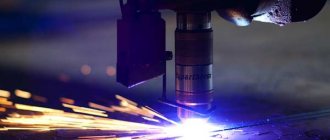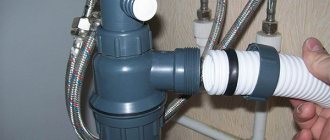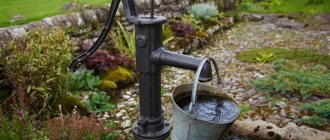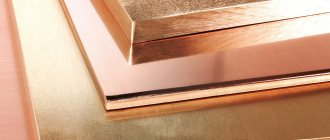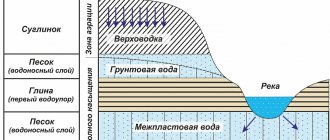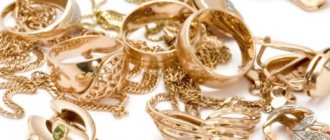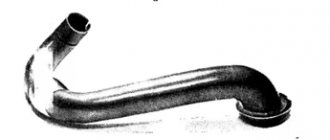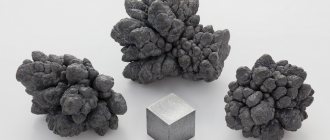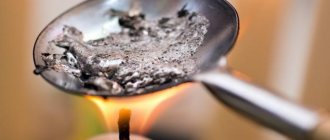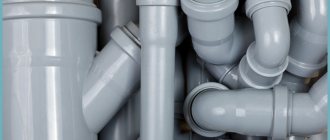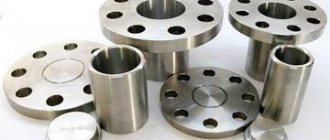On the shelves of specialized stores there is a wide range of different weights and shot. However, judging by numerous reviews, most avid fishermen and hunters prefer to use home-made products rather than factory-made ones. Due to the fact that shot is a consumable material, and sinkers are often lost, hunters and fishermen have a constant need for this raw material.
It is this category of consumers who is interested in where to get lead for casting? According to experts, there are several effective ways to extract lead. You will find information on where to get lead for sinkers and shot in this article.
Getting to know the material
Lead is and has excellent anti-corrosion properties, due to which this chemical element is used in the manufacture of protective coatings in shipbuilding.
Lead is immune to x-rays and radioactive radiation. For this reason, special protective sheets are made from this metal, the task of which is to protect a person from intense radiation.
After the accident at the Chernobyl nuclear power plant, when transported by helicopter, reactive substances were contained in containers surrounded by lead ingots.
The most common uses of this metal are fishing and hunting. Due to the fact that lead is inexpensive and easily melts, it is easy to make a projectile for a firearm or a sinker for fishing tackle from it.
Due to the softness of lead, such a weight can be easily crimped and will be easy to attach to a fishing line without additional equipment. If difficulties with melting usually do not arise, then the question of where to get lead is very relevant. Below are several popular lead mining methods.
From battery
For those who are interested in where to get lead, experienced fishermen and hunters recommend paying attention to the battery. Finding it won't be difficult. All you have to do is go to a scrap metal collection point. In this case, you will have to spend a little money. Those who want to save money can be advised to look for it in a landfill. Old batteries often gather dust in car enthusiasts' garages. If you know car enthusiasts, you're in luck. The owner will be only too happy to get rid of such rubbish. Judging by numerous reviews, batteries are considered the most common source for the extraction of lead, which is presented in the form of special plates. Non-ferrous metal is easy to melt.
From the counter
This method is suitable for those who have friends who work in the water utility and power grid. Employees of these services quite often have to deal with meters, install or break seals. They are made of lead and, when dismantled, are no longer valuable, so it is possible to agree on regular supplies of this non-ferrous metal.
How to extract?
Having obtained a battery, beginners often ask the question of what to do next. Experts recommend performing a complete disassembly. Only in this case will it be possible to remove the lead plates. Since they are in acid, they must dry out before melting. Judging by the reviews, disassembly will take at least six hours. The plates dry within 24 hours. Melting will take one hour. In general, you will have to work on one battery for at least a day and a half. As a result, after melting the plates, up to two kilograms of lead can be extracted. Whether it is worth spending time on this, everyone decides for themselves.
Story.
The origin of the word "lead" is unclear. In the old days, lead was not always clearly distinguished from tin. In most Slavic languages (Bulgarian, Serbo-Croatian, Czech, Polish) lead is called tin. Our “lead” is found only in the languages of the Baltic group: svinas (Lithuanian), svin (Latvian). For some unfortunate translators, this led to funny misunderstandings, for example, about “tin batteries” in cars. The English name for lead, lead, and the Dutch word, lood, are probably related to our word “to tin.” The Latin plumbum (also of unclear origin) gave rise to the English word plumber - plumber (once pipes were caulked with soft lead. And another confusion associated with lead. The ancient Greeks called lead “molybdos” (the name was preserved in the modern Greek language). Hence - Latin molibdaena: this was the name in the Middle Ages for the lead sheen PbS, and the rarer molybdenum sheen (MoS2), and other similar minerals that left a black mark on a light surface. The same mark was left by graphite and lead itself. Thin lead rods could be written on parchment; it’s not for nothing that in German pencil is Bleistift, i.e. lead rod.
Also on topic:
ORGANOMETALLIC COMPOUNDS
Lead, along with gold, silver, copper, tin, iron and mercury, is one of the seven metals known since ancient times. These metals were compared with the then known planets (Saturn corresponded to lead). It is believed that people first smelted lead from ores 8 thousand years ago. Excavations in ancient Egypt have uncovered silver and lead artifacts in burials from before the dynastic period. Similar finds made in Mesopotamia date back to the same time. The joint findings of silver and lead items are not surprising. Even in prehistoric times, people's attention was attracted by beautiful heavy crystals of lead luster. Deposits of this mineral were found in the mountains of Armenia, in the central regions of Asia Minor. And the mineral galena often contains significant impurities of silver. If you put pieces of this mineral in a fire, the sulfur will burn out and molten lead will flow (charcoal prevents the oxidation of lead). Already many millennia before the new era in Mesopotamia and Egypt, statues were cast from it.
In the VI century. BC. Rich deposits of galena were discovered in Lavrion, a mountainous area near Athens. During the Punic Wars (264–146 BC), numerous lead mines operated in the territory of modern Spain, which were founded by the Greeks and Phoenicians. They were later developed by the Romans; Roman engineers used lead to make ancient water pipes. The ancient Greek historian Herodotus (5th century BC) wrote about a method of strengthening iron and bronze staples in stone slabs by filling the holes with fusible lead. Later, during excavations of Mycenae, lead staples were found in the stone walls.
When producing lead, ancient metallurgists first calcined the ore, and reactions took place
2PbS + 3O2 ® 2PbO + 2SO2 and PbS + 2O2 ® PbSO4. Then the temperature was increased, which led to the smelting of lead:
PbS + 2PbO ® 3Pb + SO2; PbS + PbSO4 ® 2Pb + 2SO2. The first smelting furnaces, made of clay and stones, were very primitive. They tried to install them on the slopes of hills, where the winds blow, helping the firing. The smelted lead, as a rule, contained silver - sometimes up to 0.5% or more. When such a melt is slowly cooled, pure lead first crystallizes, and the liquid is enriched with silver - up to about 2%. To isolate silver, the cupellation method was used: molten lead was oxidized in a porous clay vessel - a cupela, and its oxide was then reduced back to metal. The mechanism of this process was studied only in 1833.
Lead was also used to purify gold and silver using the cupellation method. To do this, the precious metal to be purified was fused with lead. Lead and other impurities were easily oxidized at high temperatures; the resulting oxides were blown away by a stream of air, and were partially absorbed into the pores of the font, and an ingot of pure silver or gold remained at the bottom. The lead oxide could then be turned back into metal by heating it with charcoal. Archaeological finds in Ur and Troy indicate that cupellation was known in the north-west of Asia Minor already in the first half of the 3rd millennium BC. And Greek craftsmen managed to extract almost all the silver from the lead mined in Lavrion: according to modern analyzes, only 0.02% of it remained in the lead! The art of ancient metallurgists is worthy of surprise: after all, they had neither the ability to control the temperature at different stages of the process, nor to conduct chemical analyses. Still, there was a lot of unextracted lead left in the mine dumps. Roman metallurgists achieved even better results by halving the residual amount of silver. Of course, they were not concerned about the purity of the lead, but the completeness of the extraction of the precious metal from it. Moreover, as the Greek historian Strabo testifies, by processing the old dumps in Lavrion, the Romans were able to extract quite a lot of both lead and silver, leaving about two million tons of waste ore in the dumps. After this, the mines were abandoned for almost two millennia, but in 1864 the dumps began to be processed again - this time for the sake of only silver (about 0.01% of it remained in them). At modern metallurgical enterprises, hundreds of times less silver is left in lead.
Ancient potters, grinding lead luster with clay and water, poured this mixture over the clay vessels to be fired. At high temperatures, the surface of the vessel was covered with fusible lead glass. In 1673, the English glassmaker George Ravenscroft, adding lead oxide to the glass, invented crystal glass, which melts easily, is easy to process and has a special shine that brings it closer to real rock crystal. Later, by fusing pure white sand, potash and lead oxide, they obtained rhinestone (on behalf of the jeweler Strass, who lived at the end of the 18th century) - a type of glass with such a strong shine that it imitated diamond well, and with the admixture of various pigments - other precious stones.
Thin lead plates were used to cover the wooden hulls of ancient ships. One such Greek ship, built in the 3rd century. BC, was found in 1954 at the bottom of the Mediterranean Sea near Marseille. The Romans also made pipes from lead, 3 meters long and of different, but strictly defined diameters (there were 15 options in total). This is the first example of standardized industrial production in history. First, a plate was cast from lead, wrapped around a wooden rod, and the seam was sealed with tin-lead solder (its composition has remained virtually unchanged since then). Leaks were often found in the pipes and had to be repaired. Until now, during excavations in Italy and England, such pipes are found in very good condition. The Roman architect and engineer Marcus Vitruvius Pollio recommended replacing lead pipes with ceramic ones - made of baked clay. He drew attention to the sickness of the workers involved in lead smelting and believed that lead “deprives the blood of its strength.” However, not everyone shared this opinion. Thus, the Roman statesman, scientist and writer Pliny, author of the famous “Natural History,” wrote about the benefits of lead preparations, that lead ointment helps remove scars, heal ulcers and eye diseases.
In the Middle Ages, the roofs of churches and palaces were often covered with lead plates that were resistant to weathering. Back in 669, the roof of the monastery church in York was covered with lead, and in 688, the bishop in Northumberland ordered the roof and walls of the church to be sheathed with lead plates. The famous stained glass windows in cathedrals were assembled using lead frames with grooves in which plates of colored glass were secured. Following the example of the Romans, both water and drainage pipes were made from lead. So, in 1532, square lead drain pipes were installed in the Palace of Westminster. In those days, all these products were not rolled, but cast in molds, at the bottom of which finely sifted sand was poured. Over time, a durable protective layer appeared on lead products - patina. Some lead-clad medieval spiers have survived for almost seven hundred years. Unfortunately, the fire of 1561 in London destroyed such a spire of the greatest St. Peter's Cathedral.
When firearms appeared, large quantities of lead were used to make bullets and shot, and lead also began to be associated with mortal danger: “Destructive lead will whistle around me” (A. Pushkin), “For your trench, another fighter exposed his chest to evil lead” ( K. Simonov). At first, shot was cast in split molds. In 1650, the English Prince Rupert invented a faster and more convenient method. He discovered that if a little arsenic was added to lead and the alloy was poured through a kind of large colander into a tank of water, the shot balls were formed into regular spherical shapes. And after Johannes Gutenberg invented a way to print books using movable metal type in 1436, printers for hundreds of years cast letters from the so-called lead-based typographical alloy (with an admixture of tin and antimony).
Of the lead compounds, red lead Pb3O4 and basic lead carbonate (lead white) have been used since ancient times as red and white paint. Almost all the paintings of the old masters were painted with paints based on white lead. The ancient method of producing them was original: pots with strong vinegar were placed in manure, and thin lead plates twisted into a spiral were suspended above them. Decomposing, the manure produced heat (it is necessary for enhanced evaporation of acetic acid) and carbon dioxide. The combined effect of these substances on lead, as well as atmospheric oxygen, produced white. In addition to being toxic, these whites darken over time because they react with traces of hydrogen sulfide, which is always present in the air: 2PbCO3 Pb(OH)2 + 3H2S ® 3PbS + 2CO2 + 4H2O. When restoring such paintings, darkened areas are carefully treated with a solution of H2O2, which converts black sulfide into white sulfate: PbS + 4H2O2 ® PbSO4 + 4H2O. Currently, poisonous lead white has been replaced by more expensive but harmless titanium. Pigments containing lead have limited use (for example, as pigments for artistic oil paints): lemon lead crown 2PbCrO4 PbSO4, yellow lead crown 13PbCrO4 PbSO4, red lead molybdate crown 7PbCrO4 PbSO4 PbMoO4.
From fishing weights
If there are no car enthusiasts you know, and there is not a single battery found at the scrap metal point and the person does not know where to get lead, experienced craftsmen recommend purchasing this non-ferrous metal in the fishing products department. However, this method is less effective, since you will first have to buy lead weights and only then melt them. 1 kg of lead costs approximately 200 - 250 rubles. However, with the necessary raw materials, you can make good shot for ammunition using a homemade method.
Why is it necessary to recycle non-ferrous metal?
Many people have an incorrect perception of the activities of non-ferrous metals collection points. In their view, these are semi-legal organizations that profit from the population. This opinion is largely explained by the work of points that operate unofficially, buying up even what is prohibited from being accepted under the current legislation of the Russian Federation.
is a specialized reception point that operates in strict accordance with current regulations. This is why it is profitable for us to sell lead and other non-ferrous metals:
- You make a profit - about 70-120 rubles per kg (depending on the type of scrap metal).
- For enterprises, this is a good opportunity to get rid of potentially hazardous waste, unloading their industrial territory.
- Environmental protection. This non-ferrous metal is toxic, so it must not be disposed of with other household waste.
- Processing raw materials for recycling involves lower costs than extracting metal from nature. At the same time, this is a more environmentally friendly process.
We buy non-ferrous metals at our collection points in Moscow and the Moscow region. We work officially, so we provide all the necessary documents for government services (on request).
From car wheels
Another option where to get lead is a car service. Since the car wheel is equipped with special balancing weights, if necessary, they can be dismantled and used for other purposes.
According to experts, one such weight weighs 50-60 g. Judging by numerous reviews, 1 kg will cost no more than 50 rubles. For beginners and those who have no idea where to get lead, experts recommend using car weights.
But today lead is not used in its pure form as a material for their manufacture. Often this is zinc with impurities of babbitt - low-melting. The composition may include antimony and tin. In addition to weights for wheels, lead is also mined from sliding bearings, and less often from sealing gaskets.
Where can I get a lot of lead?
According to experts, you can use a communication cable with a lead sheath. To make the coating, lead is used, which, judging by reviews, is very soft and can be easily removed with a regular knife. Depending on the brand of cable, the thickness of its protective layer can vary from 1 to 2 mm. Due to the fact that bitumen is applied on top of the lead coating, and the product itself is wrapped with steel tape, those who want to extract a low-melting non-ferrous metal will have to do a fair amount of tinkering.
Experienced professionals recommend that beginners perform this procedure at sub-zero temperatures. In this case, it is much easier to separate the bitumen. Bituminous substances melt well. It is enough just to hold the cable over the fire for a while. The bitumen will flare up and it will be much easier to remove. According to experts, it is lead shells that provide the largest amount of the necessary metal. Compared to lead extracted from a battery, cable lead is much cleaner.
In addition, during the melting of battery plates, a lot of debris remains, which is often more than the non-ferrous metal itself. For this reason, before starting melting, the plates are carefully tapped. The main purpose of these actions is to get rid of the filler. Otherwise, there will be a lot of unnecessary slag in the container with molten lead.
The main sources of lead in everyday life
This non-ferrous metal surrounds us in various places. Below we list where to find lead at home. Choose an affordable method of extracting valuable metal and increase your income.
Battery scrap
Spent power supplies contain a large supply of non-ferrous metals. To extract lead, carefully pour the electrolyte into a separate container. The plates are then melted down and used again. Disassembling the battery yourself is a dangerous activity. Don't take any risks - sell the entire battery. We buy a battery with a damaged case.
Cable scrap
Lead is usually contained in a protective sheath. We consider scrap cables to be valuable; the presence of blockage in the metal is no more than 1%.
Criteria for quality cable scrap:
- lead content in the shell 99%;
- no traces of oxidation;
- normal background radiation;
- no traces of PVC insulation;
- no contamination.
A used power cable or leftovers from storage are places where getting lead is easy. We buy from 1 kg of metal. We weigh and evaluate raw materials. Make sure the deal is fair. Lead intake in Moscow is carried out daily. We can come to the client to load a large shipment.
Home and industrial methods
There is literally a homemade way to protect lead surfaces from corrosion.
There is always sunflower oil on the farm. Pour it into a bowl and immerse the newly smelted figurine in it. Hold for about five minutes, remove, place on a layer of napkins and let dry. In production, it is usually used to protect lead parts, in other words, where industrial oil is sold. You can order graphite lubricant through the online store. The lead product will retain its shine for a long time.
If the product is large, you can simply wipe it with a cotton swab dipped in vegetable oil.
Get rid of oxide
If there is already an oxide film on the surface, it can be removed with concentrated acid.
Remember that for chemical experiments it is better to use chemical glassware. An ordinary glass jar may not be strong enough, and using metal or plastic objects is not at all advisable. Don’t forget to also take precautions - you need to wear gloves when working with caustic acids. A protective mask is also advisable. Dip the object into the acid and wait until the oxide film disappears. Carefully pour off the acid. Let the product dry, then lubricate it with oil, graphite grease or varnish. When working with lead, remember that this material is toxic. Lead has been known since ancient times. This metal is indispensable in many industries due to its physical and chemical properties. To use lead, you need to know its melting point, which will allow you to make the necessary materials and parts from it. It is easily forged, very ductile, and is also inert to acids at normal temperatures.
Human exposure to lead
The most common culprit of heavy metal poisoning is lead. For a long time, lead additives were used to lead gasoline, which led to severe air pollution in large cities. Today, the use of lead to increase the octane number of fuel is prohibited almost throughout the world (in the Russian Federation - since 2002). Other possible sources of poisoning:
- industrial emissions;
- agricultural products contaminated with heavy metals;
- household items containing lead;
- work in hazardous industries.
Once in the body, lead has a strong toxic effect. Metal poisoning in childhood is especially dangerous. Lead intoxication in a child leads to delays in physical and mental development, and cognitive impairment can manifest itself throughout subsequent life. In adults, constant contact with lead or regular inhalation of its vapor causes chronic poisoning, impairs brain function and significantly increases the likelihood of serious diseases, including cancer.
Lead Applications
One of the most common uses is to make bullets, shot and other firearms projectiles. And the opportunity for hunters to make homemade bullets was created thanks to the cheapness of the metal and its low melting point.
Fishing sinkers are also made from lead. Due to the fact that the metal is quite soft, it can be fixed to the fishing line without the use of special devices, simply by crimping.
Lead also has anti-corrosion properties, so it is used to apply a protective layer to iron products and to make protective sheaths for cables. Also, this feature of lead allows it to be used in the production of paints and varnishes.
The main component of red lead, or red lead, which is used to paint the underwater part of a ship, is a pigment that contains lead.
This metal is often used in the form of alloys. Sheets containing lead, for example, can protect against X-rays and radioactive radiation. During the accident at the Chernobyl nuclear power plant, which was accompanied by intense radiation, bags of lead ingots and shot were used to stop dangerous processes in the reactor. To protect the people who were on the helicopters delivering this cargo, lead sheets were used. The unique features of this metal in this case turned out to be irreplaceable.
How is lead mined in nature?
Native lead metal does not occur in nature; it is mined from lead ore, which is found in polymetallic or independent type deposits. In nature, geologists find lead according to certain characteristics in various states - in total, 180 lead ore minerals are found. The largest deposits are located in Australia, Mexico, Canada, the USA and Peru. Typically, lead in polymetallic deposits is accompanied by valuable metals, most often zinc. Lead is found in a bound state, in the form of sulfides, carbonates, sulfates, chlorides, chromites, molybdenum and other forms.
What is lead mined from: what rock, ore and mineral?
Ordinary users are wondering what lead is made of, or rather, from what rock, ore and mineral lead is mined in modern realities. Let's tell you in more detail.
Native lead is rare; the range of rocks in which it is found is quite wide: from sedimentary rocks to ultramafic intrusive rocks. In these formations, it often forms intermetallic compounds (for example, zvyagintsevite, etc.) and alloys with other elements (for example, lead + tin + antimony). This metal is part of 80 different minerals. The most important of them are: galena PbS, cerussite, anglesite (lead sulfate); of the more complex ones - tillite and betechtinite, as well as lead sulfosalts - jamesonite, boulangerite. Always found in uranium and thorium ores, often having a radiogenic nature.
Under natural conditions, it often forms large deposits of lead-zinc or polymetallic ores of the stratiform type (Kholodninskoye, Transbaikalia), as well as skarn (Dalnegorskoye (formerly Tetyukhinskoye), Primorye; Broken Hill in Australia) type; galena is often found in deposits of other metals: pyrite-polymetallic (Southern and Middle Urals), copper-nickel (Norilsk), uranium (Kazakhstan), gold ore, etc. Sulfosalts are usually found in low-temperature hydrothermal deposits with antimony, arsenic, and also in gold deposits (Darasun, Transbaikalia). Lead minerals of the sulfide type have a hydrothermal genesis, minerals of the oxide type are common in weathering crusts (oxidation zones) of lead-zinc deposits. Lead is present in clarke concentrations in almost all rocks. The only place on earth where rocks contain more lead than uranium is the Kohistan-Ladakh arc in northern Pakistan.
To obtain lead, natural ores containing galena (lead sulfide) are mainly mined. First, using the flotation method, a concentrate is obtained, which contains up to 70 percent rough lead. The next step is to extract the werkbley. There are several ways to process the concentrate into werkbley (the so-called rough lead):
- Previously widespread in the USSR, the method of mine reduction smelting;
- Method of oxygen-suspended cyclone electrothermal smelting of lead-zinc products;
- Vanyukov melting method (known as melting in a special liquid bath).
For smelting in a shaft (water jacket) furnace, the concentrate is first sintered, and then the mixture is loaded into the furnace, where lead is reduced from its oxide.
Subsequently, the resulting werkblei, containing more than 90 percent lead, is purified. First, zeigerization and subsequent treatment with natural sulfur are used to extract copper. Antimony and arsenic are then removed by alkaline refining. After this, silver and gold are separated from the composition, zinc foam is used for this, and then zinc is distilled from the mixture. By treating with calcium and magnesium, bismuth is removed from the composition. As a result, the impurity content inside lead becomes less than 0.2%.
In nature, lead ores are found as impurities within polymetallic deposits of various types. Finding lead in the form of sulfides, carbonates, sulfates, chlorides, chromites, molybdenum and other forms, geologists start mining lead ore using the above technologies. Galena, which is lead sulfide, is more common than other deposits. Cerussite (carbonate) and anglesite (sulfate) are often found in nature.
About 40% of all lead used is recycled material, made from various lead products, such as batteries. Modern technologies make it possible to recycle the toxic heavy metal, melt it down and reuse it, often as an additional component in various alloys. Recycling batteries and other lead products guarantees environmental safety and reduces the need to develop new deposits, which means providing this metal for future generations.
Lead mining in the world (in nature)
The well-known international company InternationalLead&ZincStudyGroup monitors the situation on the global precious metals market, specializing in lead and zinc. The organization predicts that by the end of 2021, demand for lead exceeded global supply by 46 thousand tons. ILZSG previously released information about expectations that the balance would have a surplus of 71 thousand tons.
ILZSG's 2021 report said global refined lead production fell 0.3% year-on-year to 11.76 million tonnes. The increase in production in India was proportionately offset by declines in other countries.
One of the countries that experienced a decline was Australia. This year, due to technical difficulties, Australian company Nyrstar significantly reduced lead production at the PortPirie site. At the same time, Argentina also lost its production capacity: at the end of last year, Glencore decommissioned the Palpala plant. The third country was Canada, where part of the lead was lost at the Belledune plant due to a workers' strike.
In 2021, a significant number of production facilities stopped working due to quarantine measures in the world, which were introduced in connection with the spread of the Covid-19 coronavirus infection. But like production, the demand for this metal is also stagnating - the automotive industry around the world is suffering losses and closing production. As of 2021, the main consumer of lead is car battery manufacturers.
Melting point of lead
The melting point of pure lead, which does not contain impurities, is 328°C. When melted, the casting qualities of already ductile lead are improved. This allows hunters to cast projectiles for weapons.
Lead can be melted even at home or over a fire.
However, to pour into molds it is necessary to bring the metal to a fluid state. To this extent, lead can be produced at a temperature approximately 100-200°C above the melting point. The boiling point of this metal varies within 1749oC.
When molten, it has noticeable volatility, which increases with . Lead vapors and lead dust can cause acute poisoning in humans. For severe intoxication, a concentration in the body of 0.3 g of lead or its components is sufficient.
Lead prices in Moscow per kg
In order to know approximately the amount of possible benefits and plan expenses, we have provided a preliminary price list on the website. Ask the manager for the actual price for a battery, cable, or other lead-containing product.
| Name | Retail price | Wholesale |
| Lead cable with clean sheath | 110 RUR/kg | 128 rub./kg |
| Lead cable with dirty sheath | 100 rub./kg | 118 rub./kg |
| Polypropylene battery plates | 105 rub./kg | 122 RUR/kg |
| Ebonite battery plates | 81 RUR/kg | 91 RUR/kg |
| Helium battery plates | 105 rub./kg | 122 RUR/kg |
| Tire weights | 61 RUR/kg | 80 rub./kg |
| Lead remelting | 90 rub./kg | 103 RUR/kg |
| Typographic lead hart | 27 RUR/kg | 42 RUR/kg |
| Lump lead | 100 rub./kg | 125 RUR/kg |
| Lead in pigs | 105 rub./kg | 122 RUR/kg |
| Lead shot | 90 rub./kg | 97 RUR/kg |
